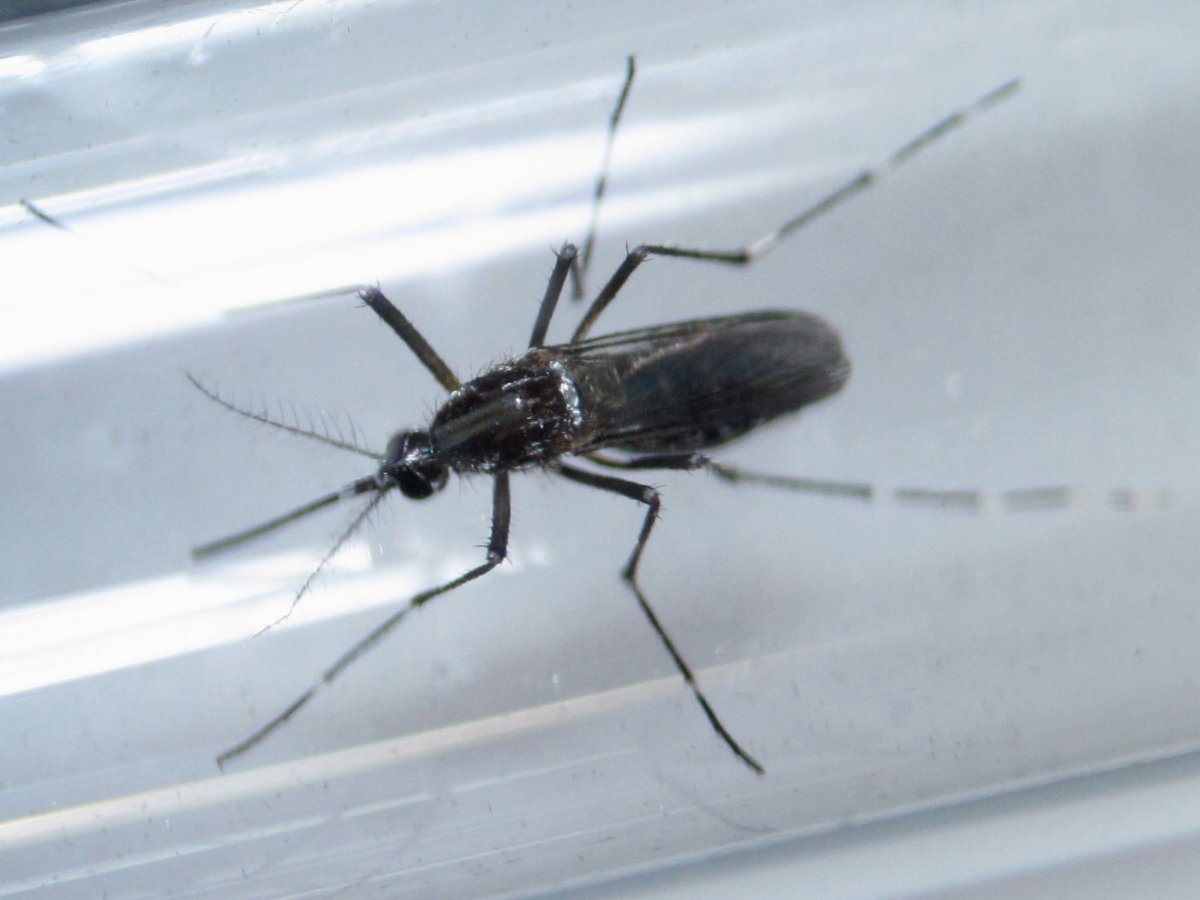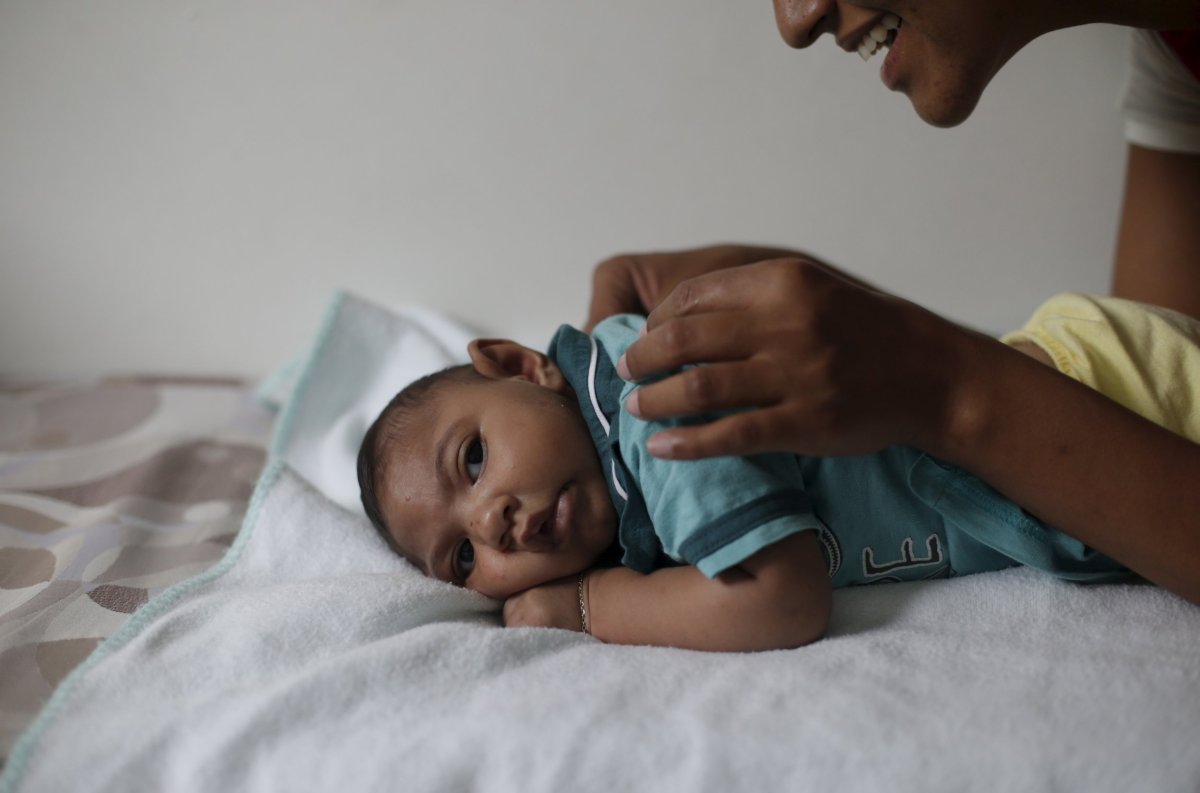
The abnormally small heads seen among children infected with Zika virus have haunted all those living in regions where mosquitoes carry the pathogen, including the United States. It turns out that just one genetic change in a viral protein could cause the defect—yet another piece of evidence of just how easy it could be for a virus to transform from mild to a serious global concern.
A group of Chinese researchers identified one particular mutation in the virus most associated with microcephaly, the birth defect associated with last year's outbreak.
The breakthrough could be crucial for future outbreaks. Although concerns over Zika have diminished since last year, the problem has not disappeared. With so many areas of the U.S. now covered in stagnant floodwaters, questions linger about what impact recent storms could have on the transmission of the virus.
"[Zika] will come back at some point," Dr. Michael Diamond, an infectious diseases specialist at the Washington University School of Medicine in St. Louis (but who was not involved in the research), tells Newsweek. "I can't tell you when, but it will come back at some point. And if it comes back, are we going to be in the same place that we were last time—with nothing—or are we going to continue to study it, understanding it might come back worse than it is now?"
The new finding is a first step toward knowing how and why the Zika virus causes birth defects—and which forms of the virus might be particularly dangerous.
The research was published in Science on Thursday.

The genetic abnormality alters the course of the disease. "This specific mutation can indeed make the virus more aggressive," Alysson Muotri, a researcher at the University of California, San Diego who has also studied the Zika virus in animal models but was not involved in the new paper.
Microcephaly was not always a common birth defect seen in children affected by Zika. The problem may simply have gone unnoticed during earlier outbreaks because fewer infected women were pregnant. But as the epidemic changed—expanding in Brazil, most notably—the problem became more noticeable, says Diamond.
Researchers, including Cheng-Feng Qin, a virologist at the Beijing Institute of Microbiology and Epidemiology and an author of the paper, also wondered if the virus had mutated, becoming more virulent and damaging to the developing human brain.
To test this theory, Qin took nearly 100 newborn mice, separated them into four groups, and injected one of four different strains of the virus into their brain. One of the strains was associated with an outbreak that happened in 2010; three strains were isolated during the outbreak from 2015 to 2016. He also tested the virus on human brain stem cells.
For developing mice infected with one particular strain, called VEN/2016, their brain became far smaller than the brain of mice infected with other strains. The brain of mice infected was still smaller if it was infected with a virus created to carry just the one mutation found in that version of the virus—a substitution of one amino acid, serine, for another, asparagine—in a protein called prM.

But though the results were strong, the method used left many researchers with questions.
Injecting the virus straight into mice's brain meant that the virus didn't go through the usual path it would take to affect a developing fetus. In most cases, a mosquito bites a pregnant woman, then the virus spreads through her body and crosses the placenta to reach the fetus.
"Inside the brain, it works. The question is, Does it work outside the brain?" said Jean Pierre Schatzmann Peron, an immunologist at the University of Sao Paolo in Brazil. Since the mutated protein identified in this study is found on the surface of the virus, it could have an impact on the likelihood of the virus making it through that path. Perhaps the human immune system would detect the modified protein on the surface of the virus and kill it, for example.
And why would this mutation make the virus work better or differently, he asked. "What does it change? There are a lot of other questions that have to be answered after this."
Qin and the Chinese team are working on some answers. They're currently studying factors that interact with the mutated protein.
But ideally, Diamond noted, scientists would use similar experiments with monkeys or chimpanzees, allowing the virus with this mutation to infect the animals from mosquitos and watching how it affected fetal development. "That experiment needs to be done," he said.
A more aggressive Zika virus could also be exacerbated by other issues that make an infant more susceptible to microcephaly. "This [mutation] can change the biology of the virus, but it doesn't fully explain what's going on," says Muotri. Environmental factors, genetic background of the person, previous exposure to other viruses or vaccines could all play a role. "It's not only about the viral genetics," says Muotri. "There are probably other factors that play a role."

In the U.S., 100 children infected with Zika have been born with microcephaly. Children with this birth defect may have seizures, hearing loss, difficulty seeing or moving, and may not learn to sit, stand or walk at the same rate as other children. They may also have intellectual disabilities.
Though the mosquito that spreads Zika can be found throughout the southern United States—and even as far north as New Jersey and Northern California—it hasn't been widespread in the United States. About 5,500 cases of Zika were reported in the U.S. outside of territories like Puerto Rico and the U.S. Virgin Islands since the beginning of 2015. Only 225 of those cases were due to mosquito bites that happened in those states; most were residents who were likely traveling when they were infected.
But as Diamond points out, the virus could re-emerge anytime, and we need to be prepared.
Uncommon Knowledge
Newsweek is committed to challenging conventional wisdom and finding connections in the search for common ground.
Newsweek is committed to challenging conventional wisdom and finding connections in the search for common ground.
About the writer
Kate Sheridan is a science writer. She's previously written for STAT, Hakai Magazine, the Montreal Gazette, and other digital and ... Read more
To read how Newsweek uses AI as a newsroom tool, Click here.








